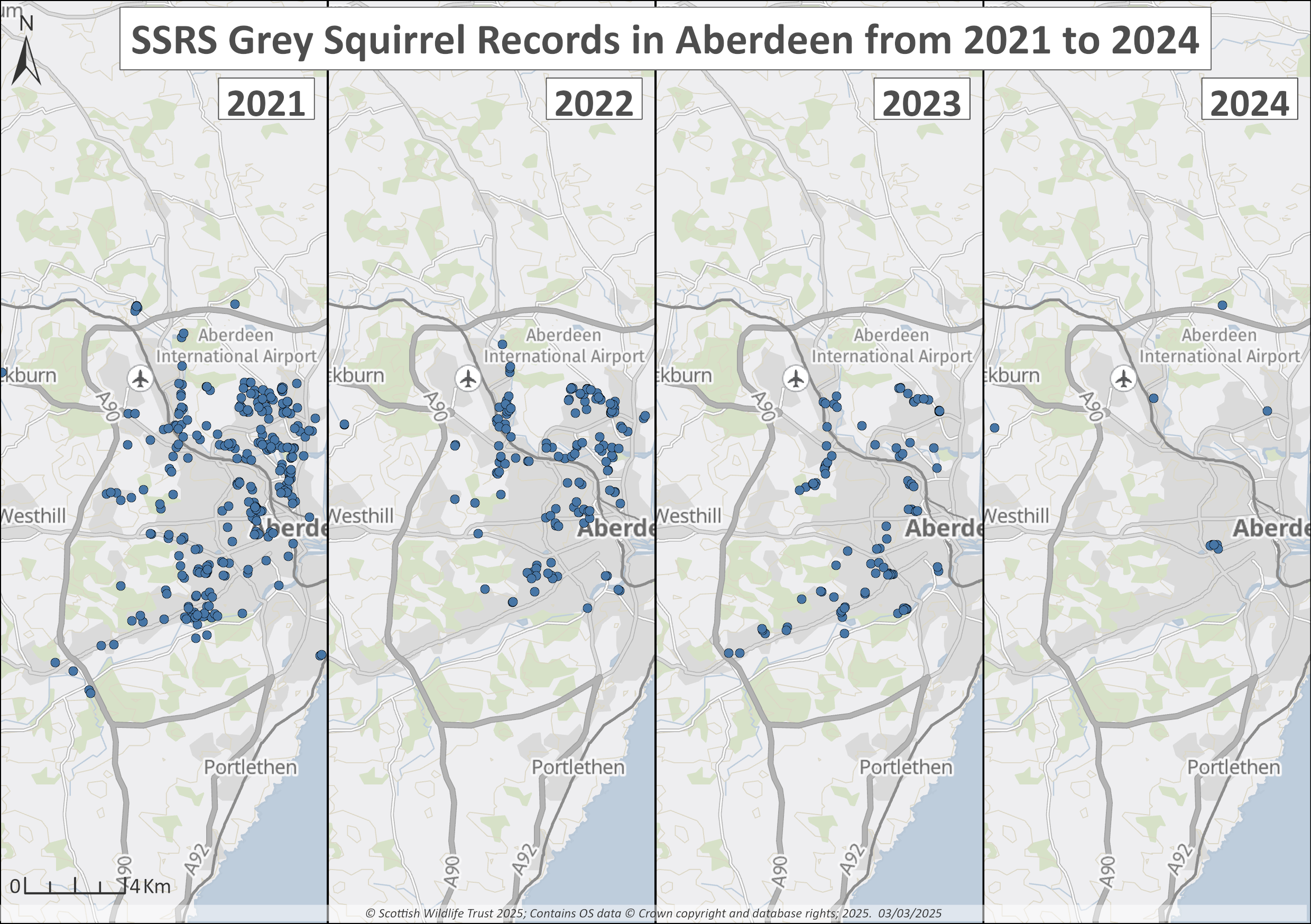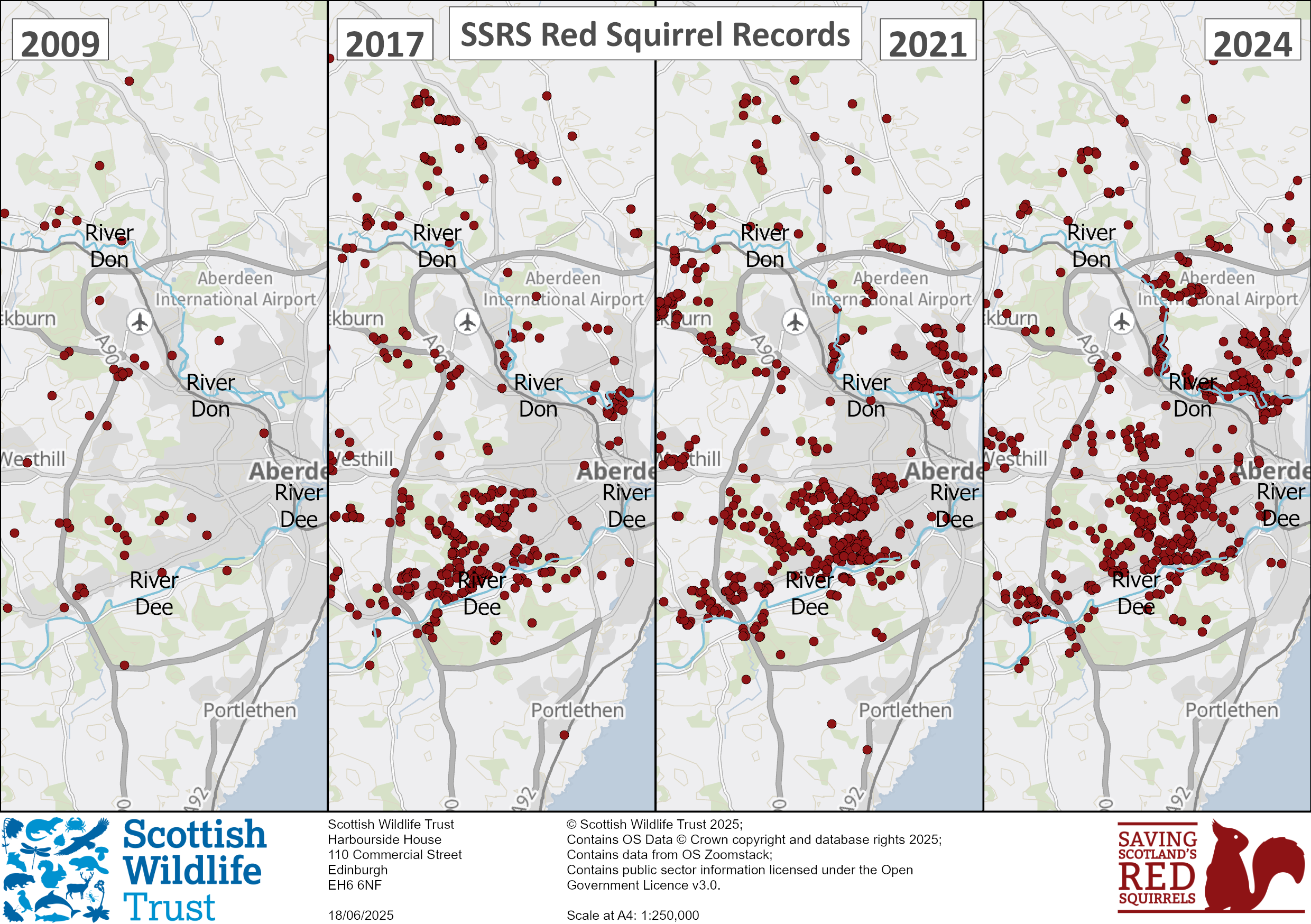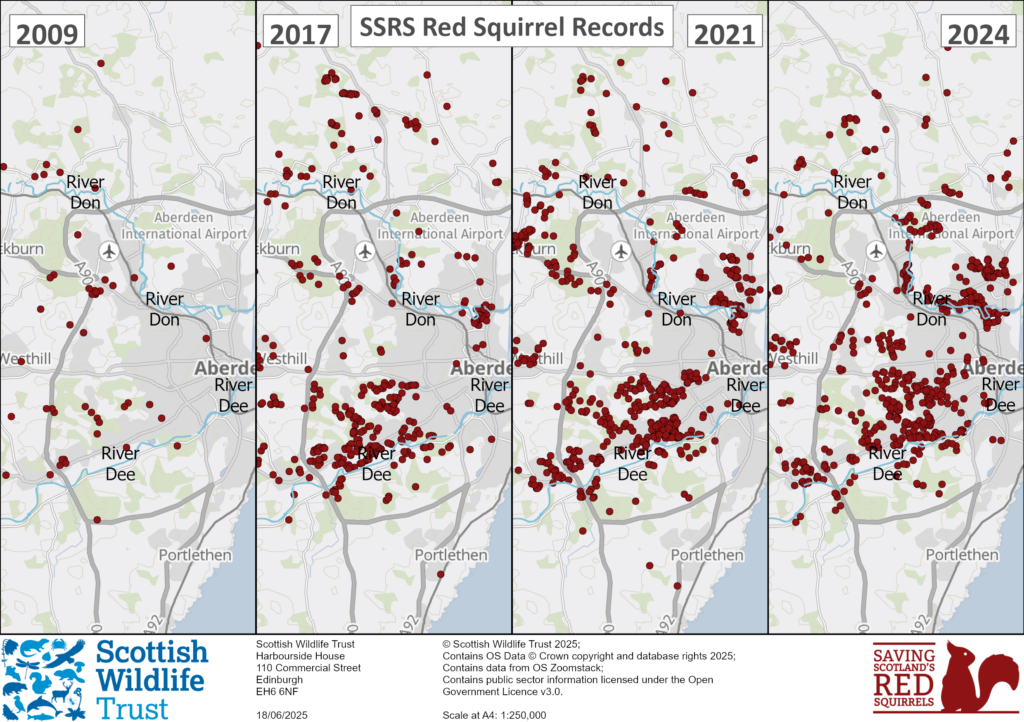It’s halfway through 2025 and we’re celebrating our red squirrel conservation work in Aberdeen.
The history of red and grey squirrels in the North East is a slightly different one to the rest of the country. Let’s take a look at the story so far…
Up until just over 100 years ago, the only squirrels found in Scotland, and the rest of the UK, were our native reds. Then, in 1876, Victorians brought grey squirrels to Cheshire in England, to decorate parks. Naturally spreading from there and with further releases, including across the south of Scotland, grey squirrels rapidly took over, wiping out red squirrels as they went through competition and by carrying the deadly squirrelpox virus.
By the mid-20th Century, greys had completely replaced reds in the central belt, and travelled up Scotland all the way to the Highland Boundary Fault, which runs from Helensburgh to Stonehaven. This natural feature helps prevent greys from spreading across the geological boundary.
In 1971 grey squirrels were brought to a zoo in Aberdeen and, during their first night in the city, escaped. When SSRS was formed in 2009, greys had spread throughout Aberdeen and the surrounding areas, using the rivers Dee and Don as corridors. There were almost no red squirrels left.
Aberdeen was designated as a priority area for the project. The “island” population of grey squirrels here wasn’t connected to other populations in Scotland, so if we were able to remove them, red squirrels would have a good chance of bouncing back. Research by Lisa Signorile from University College London, and genetic testing by the Royal Zoological Society of Scotland has shown that the grey squirrel population in Aberdeen is distinctly different to those in the neighbouring Mearns area and further south.
In 2025, 15 years on, and the project has been hugely successful. Now, when you walk through the streets and parks of Aberdeen, you’re much more likely to spot a red squirrel than a grey.
Check out this video of a red squirrel in Hazlehead park, taken by volunteer Kay Morgan.
Our team, along with lots of volunteers and the cooperation of many residents, has seen the grey squirrel population reduce significantly since work began. But so far in 2025, only one grey has been caught. This means the number of individual grey squirrels left is incredibly few. Removing greys creates a space for red squirrel populations to recover.

Grey squirrel population in Aberdeenshire over the years.
This isn’t just the success of a conservation project, it also reflects amazing partnership work with the local council, with our fabulous volunteers, and for the residents of Aberdeen who have demonstrated just how much they care about our native red squirrels.
We currently have 44 volunteers on board in the city, and recently held a special event to thank them for all their hard work. Drinks, stories and photos were shared, and things got a wee bit competitive during the quiz!

Everyone had a great time at our volunteer thank you event!
Grey squirrels are still occasionally being reported around Aberdeen, but thanks to the dedication of residents and volunteers, our staff are able to act quickly.
We are confident that, with your support, we’re really close to removing all the grey squirrels, and restoring Aberdeen to its former haven for red squirrels.

Red squirrels are now being seen more frequently in gardens in Aberdeen.
Please do keep submitting your sightings of red and grey squirrels in the North East, and the rest of Scotland!

